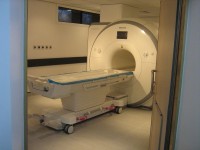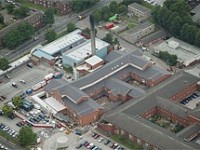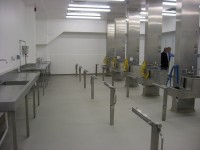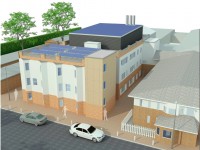The Defence and National Rehabilitation Centre

About the project
The Defence and National Rehabilitation Centre (DNRC) project is the remarkable initiative of the late 6th Duke of Westminster. He served for 40 years in the British Reserve Army and witnessed the price paid by many members of the armed forces during their service. He felt strongly that we owe those who volunteer to fight for our countries, alongside forces from other nations, the best possible care and rehabilitation, if they are injured during strenuous training or in conflict. It is this belief that inspired him to look into how this could best be achieved and resulted in the concept of a DNRC.
In 2009, following a Government announcement, the 6th Duke facilitated a major feasibility study to see what could be done. It was undertaken at very senior level across the four principal UK Government Departments (Defence, Health, Work & Pensions and Culture, Media & Sport). The Study concluded that there was real merit in establishing a DNRC to serve the clinical rehabilitation needs of the armed forces and civilians.
There was a consistent view that the whole field of rehabilitation medicine could benefit from the co-location on one site of national (N) and Defence (D) establishments – given not least the fact that the armed forces, by common consent, do rehab extremely well. The feasibility study’s conclusions were endorsed by UK Ministers who announced in autumn 2011 the next stage should be to explore the viability of the site that had been acquired (the Stanford Hall estate in Nottinghamshire) and raising the necessary capital through a major donor fundraising campaign. The project was then put on a charitable footing by the creation of the Black Stork Charity whose operating company is BS Stanford Ltd. Over the next two years a major donor fundraising campaign was undertaken to raise £300m, designs were developed and planning permission was obtained (which involved major engagement with English Heritage as the Hall is two star listed and the site is registered parkland – ideally suited to healing).
The Hall will be fully used but all the 21st century clinical facilities will be housed in a new and bespoke building adjacent to it. The Defence establishment will provide neurological and complex trauma care and a full suite of rehabilitative facilities on one site, bringing benefits that could make the establishment unique in the world in many respects. The 145 hectare (nearly 360 acre) estate provides outdoor rehabilitation facilities, such as: trim trails, hand cycle routes and other sports facilities. Patients will have the freedom to roam in the tranquil parkland setting which will contribute to their rehabilitation. Such excellence in rehabilitation medicine will provide a significant platform for practical application, research and development in what is now a fast-moving field of science and technology.
Current Situation: On 10 July 2014 the Government announced that construction of the Defence establishment would start in 2015 and that the existing Defence facility at Headley Court would move to the new Defence facility at Stanford when it was completed in 2018. The contract for construction of the Defence establishment was tendered and Interserve Construction Limited was appointed with work starting on site in August 2015. The Government expects to announce the next steps in the national (N) development at the end of 2016. Meanwhile more than two thirds of the capital sum has been raised from major donations by individuals, charitable foundations and companies, both in the UK and overseas. The 6th Duke of Westminster contributed £50m.
A Remarkable Legacy: When opened in 2018 the DNRC will have a dramatic impact on the lives of armed forces people and could be game-changing in the rehabilitation medicine field worldwide, not least, as there is a strong likelihood of wider R&D interest regionally (Loughborough University nearby is prominent in sports medicine and increasingly involved in bio-mechanics) and internationally. The DNRC promises to be a remarkable legacy, and very appropriate in the wake of the Paralympic Games where the strong message that disability is no bar to significant achievement has been transmitted worldwide.
Osbornes Role: Osbornes first became involved with the project in 2009 as part of the early pre-feasibility study, working alongside Arup to produce indicative capital cost estimates for the proposed facilities. The practice was formally appointed as Employer’s Cost Consultant on the project in 2011 and has undertaken a full quantity surveying role for BS Stanford Ltd throughout the pre-contract stages and now into the post-contract stage as construction work continues on site for completion in early 2018. Our team is delighted to be working with BS Stanford, Interserve, Arup and other client representatives and subcontractors to deliver what is a unique and rewarding project.
Details
- Value: £212m
- Architect:
- Client: BS Stanford Limited
- Appointment:
- Location: Stanford Hall Estate, Stanford on Soar, Nottinghamshire LE12 5QW








